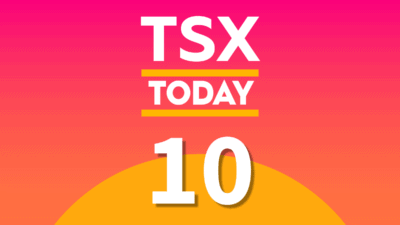There are more than enough good reasons to diversify beyond the Canadian border. Low oil prices, soaring household debt, an overheated housing market, and relatively low 2015 GDP growth of only 1.9% (compared with a global GDP growth of 3.2%) all represent major headwinds to the Canadian economy.
For Canadians, the best way to add international exposure while mitigating Canadian risks is by buying American equities. Not only is the U.S. GDP growing at an impressive 2.7% in 2015 (well above its G8 peers), but the economy is benefiting from low and growing household debt and low oil prices (as a net importer of oil).
Although buying U.S. equities directly is certainly an option, it can often present risk and complexity due to exchange rate risk, currency conversion fees, and tax consequences. A simpler option is to buy Canadian stocks with huge American exposure. In Canada, the top stocks in this regard include Toronto-Dominion Bank (TSX:TD)(NYSE:TD), CGI Group Inc. (TSX:GIB.A)(NYSE:GIB), Bank of Montreal (TSX:BMO)(NYSE:BMO), Magna International Inc. (TSX:MG)(NYSE:MGA) and Alimentation Couche-Tard (TSX:ATD.B).
1) Alimentation Couche-Tard.
One of the largest U.S. exposures for a Canadian company comes from gas station and convenience store operator Alimentation Couche-Tard. The company operates several major brands including Mac’s, K’s, Ingo and Statoil. Currently, Couche-Tard operates approximately 14,700 stores internationally, of which, only about 1,800 are in Canada.
The majority of Couche-Tard’s stores are located in the U.S. (with over 7,000 locations), and this, in turn, produces 58.6% of total gross profit. Couche-Tard is poised to benefit from stronger motor fuel sales as a result of improved economic growth and increased convenience store activity due to more gas station visits as a result of lower gasoline prices.
2) Magna International Inc.
Auto-parts manufacturer Magna International is also benefiting from large international exposure, more specifically, from large U.S. exposure. The company produced approximately $36 billion of revenue in 2014, and approximately $9.7 billion of this came from the United States compared with only $6.7 billion from Canada.
Magna’s 61 U.S. manufacturing plants are poised to benefit from record U.S. auto sales, with 17 million sales likely in 2015, growing to 20 million by 2018. Its strong relationship with American auto producers also means Magna’s Canadian plants are set to benefit from the strong American dollar, as Magna is able to pay workers in Canadian dollars, while benefiting from the strong U.S. dollar on American sales as currency is translated back to Canadian.
3) Toronto-Dominion Bank
TD Bank currently has the largest U.S. exposure of its Canadian peers. The bank currently has 1,300 U.S. branches, compared with 1,165 in Canada, and is currently the 13th-largest U.S. bank by total assets. This large footprint leads to TD obtaining about 31% of its total revenue and 28% of its net income from its U.S. operations.
TD is also has 41% ownership in e-broker TD Ameritrade, which allows the bank to further capitalize on increases in American discretionary spending. As U.S. interest rates rise, consumers add more debt, and unemployment falls, TD’s American segment should continue to grow.
4) Bank of Montreal
BMO is Canada’s second-largest bank by U.S. exposure, with operations situated in the U.S. Midwest in states like Indiana, Wisconsin, and Illinois. BMO has its Personal & Commercial, Wealth Management, and Capital Markets divisions all operating within the U.S., and these segments combined produced $268 million in Q2 2015, representing about 23% of total earnings.
BMO is currently one of the most well capitalized of its peers with a 10.2% Common Equity Tier 1 capital ratio, and the bank offers the highest dividend yield of its peers with the lowest volatility. This makes BMO a low-risk way to play the U.S. economy.
5) CGI Group Inc.
IT service provider CGI Group, which largely provides back-office IT functions including systems integration, outsourcing, consulting, and infrastructure management, is more American than it is Canadian.
The company earns about 30% of its total revenue from the U.S. compared with only 15% from Canada, and the company is exposed to both the U.S. public and private sectors. Government services comprise CGI’s largest earnings group, and U.S. state and federal governments are some of CGI’s biggest customers. These are often long-term contracts that are highly secure due to the security-sensitive nature of government work and the high customer switching costs this provides.







